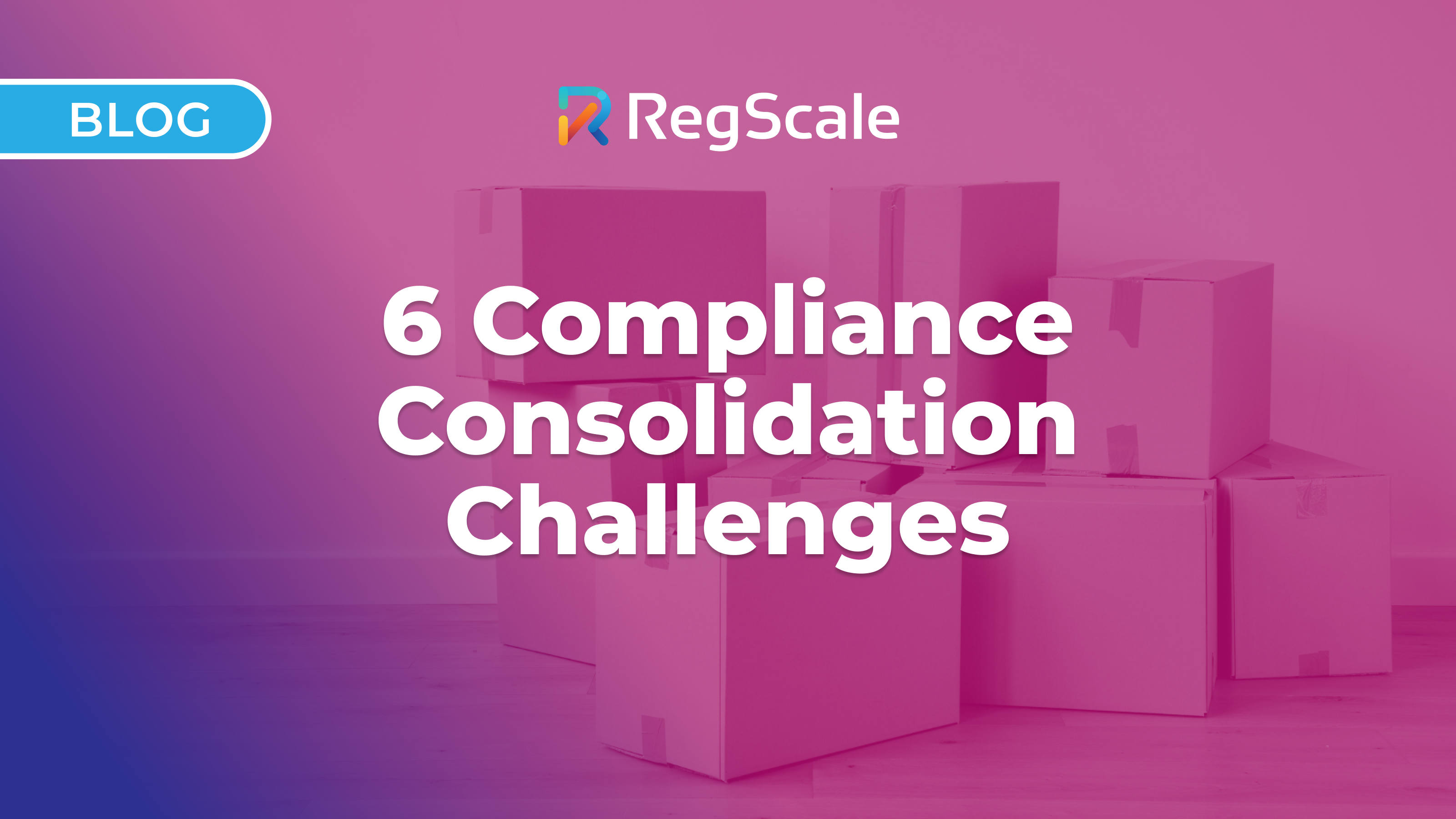
Understanding the common consolidation challenges in today’s evolving compliance environment gives you the power to avoid them. Here’s a list of five of the most common challenges, and suggestions for minimizing their impact:
1. Inaccurate data caused by manual data entry
Unreliable data is one of the most common hurdles companies face. Often this is a result of manually inputting data across numerous locations and separate databases, a cumbersome task that results in human error. Systems and processes that ensure the accuracy and reliability of all data from input to normalization are key to the solution.
2. Failure to automate labor-intensive processes
Compliance consolidation can be a time-consuming process, requiring hours of labor across multiple departments and entities. The cost can quickly add up. Investing in appropriate automation of these processes can quickly solve this challenge.
3. Using inappropriate tools and systems
Many companies make the mistake of using multiple systems without ensuring they fully integrate. This results in a headache for those responsible for consolidating information into one system. Invest in a centralized system that integrates with your existing security and compliance systems to keep your compliance paperwork up to date.
4. Evolving reporting requirements
Reporting guidelines, statutory requirements, and compliance regulations are continually evolving. As your company scales, it can be challenging to keep on top of all the changes to best practices. As compliance will present an ongoing obstacle, look for a solution that makes consolidation a core feature.
5. Data manipulation and risk-fraud
One of the most significant issues with using spreadsheets for consolidation is security—it’s much easier to fraudulently manipulate data in spreadsheets. If fraud does occur, it’s hard to track the source. One of the easiest ways to circumnavigate this challenge is to invest in software that makes security a priority, allowing you to control access, automate data input and track changes over time.
6. Spreadsheets prone to human error
With 750 million users worldwide, companies large and small use Microsoft’s Excel. However, using spreadsheets makes it difficult to ensure regulatory compliance as the data can be susceptible to fraud and errors. Without appropriate access control and access history, it’s also impossible to know who’s had access to the organization’s spreadsheets. Also, not all versions of Excel allow for collaborative work.
Compliance documentation and processes are inherently static whereas today’s systems and applications are dynamic. That means organizations need to buy or build new technology to compete in today’s economy. So, how do you solve this cadence mismatch to allow IT to move at the speed of business?
With RegScale, compliance is real-time, continuous, and complete. We moved beyond form-based data entry tools into a system that is Application Programming Interface (API) driven allowing real-time machine-to-machine communications. The result is that you have self-updating paperwork, auto-assigning tickets for issue remediation, and increased visibility into your audit risk posture.
RegScale enables you to connect with continuous monitoring tools, Internet of Things (IoT) sensors, drones, data repositories, and other solutions to have an integrated picture of your compliance posture. The result is evergreen paperwork that takes less labor to create, immediate visibility of issues to reduce surprises, and employee visibility into the compliance posture, continuously.
Now is the time to adopt a continuous compliance platform to help you become audit-ready at all times. Check out our Continuous Compliance Automation platform. With 22 tightly integrated modules, we’ve built a modern and open ERP for compliance that can help you remove compliance roadblocks.
Contact us today to schedule a demo.
Ready to get started?
Choose the path that is right for you!
Skip the line
My organization doesn’t have GRC tools yet and I am ready to start automating my compliance with continuous monitoring pipelines now.
Supercharge
My organization already has legacy compliance software, but I want to automate many of the manual processes that feed it.